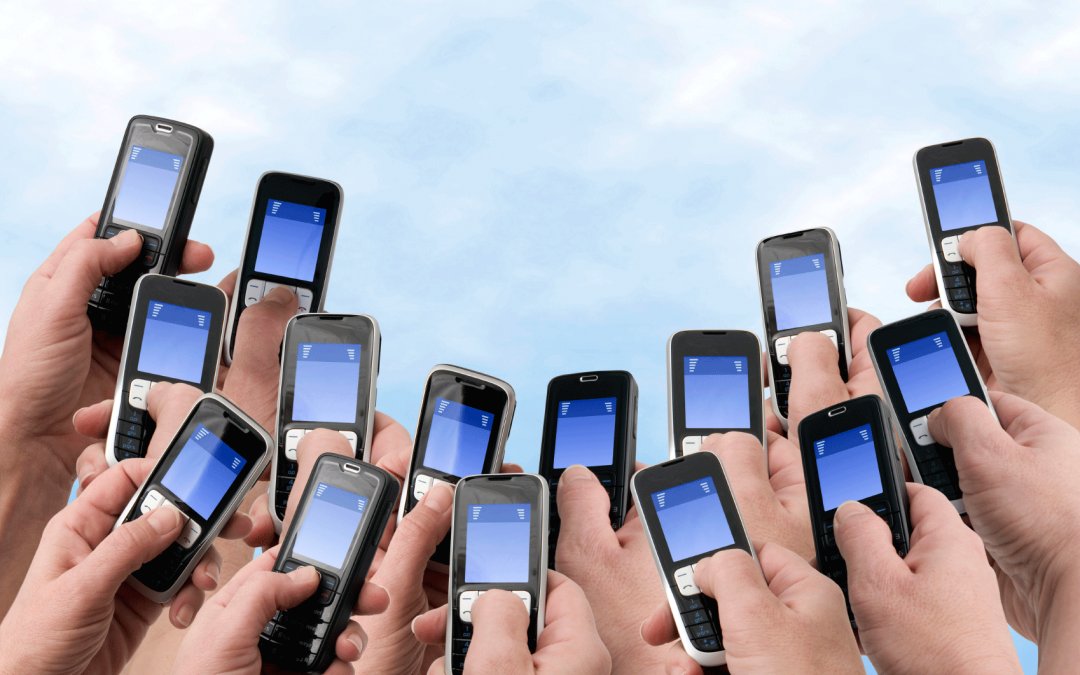
by anton | Jun 27, 2017 |
Forbes Magazine says it is “difficult to overstate” the importance of mobile marketing. The obvious reason for this is the fact there are a whopping 35 million mobile users in South Africa alone, with another 900 million or so throughout the rest of the continent’s 54 recognised countries. That’s a heck of a market and its becoming more accessible. People can use their cellphones for more than just calling and texting: mobile data prices have declined from about R700 for half a gigabyte of cellular data in 2005 to just over R150 a gigabyte (on Telkom Mobile, for example) today. The wide availability of quality smartphones, new from leading retailers, is also boosting the total audience for mobile campaigns. A lesser-known reason why mobile marketing in South Africa is set for continued stellar growth is the recent limited commercial launch of a brand spanking new nationwide LTE-A wireless network. LTE-Advanced represents a major enhancement of the Long Term Evolution (LTE) mobile communications standard. Owner Multisource has already invited a small number of clients to trial the new LTE-A network and, interestingly, for the local mobile marketing sector, its already public knowledge that Vodacom has concluded an agreement to roam on the new super-fast network. It’s great news that local mobile networks are increasing capacity through smart roaming agreements as companies like InTarget Mobile Advertising work with clients to develop ever more engaging and data-intensive campaigns. All of this is in response to facts like the fact that social media and other posts that include video and images produce 650% more engagement than text-only...

by anton | Jun 27, 2017 |
As we come to the end of June and the halfway point of what just a few months ago still felt like a new year, its natural to wonder what has been accomplished thus far. On the mobile marketing front, we are reminded that our chosen discipline is roughly comprised of two primary segments, so to speak. We have the planning phase and we have implementation. Of course, there’s also the highly-detailed reporting that mobile marketing is famous for. There’s no other area of marketing specialisation where one can drill down into the numbers quite as spectacularly as in mobile – but another time for that! So by this halfway point in the year, brand owners and their agencies should ideally have completed the planning phase involved in executing an effective mobile campaign. I say ‘ideally’ because, as we are about to find out, all is not lost if there’s been no movement whatsoever on the mobile marketing front within your organisation. Being slow off the starting blocks is not a great position to be in, but sometimes it just happens – perhaps there’s been an internal restructuring in this difficult economic climate, perhaps your RFP became a much more lengthy document that you intended. The important thing is that any position can be salvaged. There are some great advantages to only starting the planning phase of a mobile strategy halfway through the year: 1. You get to gather some fantastic market intelligence about what works and what doesn’t, all without having to spend a cent. True, your competitors might have scored big with their early riser mobile campaigns....

by anton | Apr 18, 2017 |
Those of us who were watching TV in the 1980s probably remember sci-fi shows about bionic humans with all sorts of awesome appendages. From microchips underneath the skin to titanium limbs, the human of the future was indeed a sight to behold. You might say that time has already come! Except, future ideas of arms made of precious metals have been replaced by the current reality of hands holding rose gold cellphones. The mobile phone really has become a superhuman bodily extension that enables us to overreach the limitations of our earthly bodies. So what exactly on the mobile phone enables us to do so much more today than yesterday? One could argue it was initially the phone’s early voice capabilities, followed by email and web functionality that suddenly enabled us to work from anywhere, make travel arrangements on the fly and all the while access Internet banking in a flash to make sure we could pay for our new connected lifestyles! However, mobile browsers are becoming seriously old school as apps built by mobile specialists like InTarget and its partners become the new superhuman, standout feature of the cellphone. A recent survey by eMarketer found that in 2017 most connected adults in developed economies will use mobile apps on their cellphones for at least 2 hours per day. That’s a healthy 10 plus percent increase over last year. Interestingly, what’s also true is that while mobile app usage is increasing, and that’s good news for mobile marketers, the number of apps people tend to use is declining. For anyone who has ever opened a shiny new Android or...

by anton | Mar 20, 2017 |
Many regular blog readers will know that a couple of years ago, Google updated its search algorithms to account for the growing number of people accessing the web from their mobile devices. Essentially, mobile-friendly websites now receive higher rankings that those sites not optimised for the small screen. Investments in mobile make sense, that’s for sure. However, what’s interesting and what’s emerging now – according to recent research – is that we shouldn’t assume mobile users make purchases in the same way they surf the web. Huh? Research documented on US platform Smart Insights indicates that consumers are still making their purchases, for the most part, from computers and not via their smartphones. The numbers seem to suggest that users are happy to use their mobile phones to browse and do basic purchasing research, but many of us are still reverting to our desktops and laptops to seal the deal. So it seems that while users do indeed access the web via Chrome, Safari and other mobile browsers, it is not with the express intent to buy anything. Now, that’s not as scary as it seems for us mobile marketers. This is because this same research referred to above also found that “if you want to capture a mobile market, messaging is still going to be the best way to reach [it] because most people open their text messages…” As we have said before, the beauty of messaging is that messages can be personalised, automated and sent at prescheduled times to literally millions of smartphone and feature phone users. However, the challenge is in composing short SMS or MMS...

by anton | Feb 23, 2017 |
“Pokemon GO gave us a glimpse of the future.” That’s according to the GM for Innovation at leading US mobile firm, Verve. For mobile marketers, the message is that the way Pokemon GO exploded onto the global stage, literally overnight, taught us about mobile users’ willingness to try transacting in the real world based on events in the gaming world. Last year was about coming to grips with the early learnings for marketers inherent in augmented-reality experiences. More knowledge will continue to emerge following the Pokemon GO ‘case study’ of 2016. There is clear consumer interest here and the focus must now be on inventing ways where the industry can leverage what Verve calls “game ad-units”. We need to figure out how virtual gaming experiences that matter to consumers who encounter them in stores and on their screens, can be monetised to the advantage of brands and their agencies. Mobile marketing is ideally-positioned to take advantage of this new phenomenon of the merging of virtual experiences with real-world transactions. This is because we’ve already spent the last few years getting to grips with enabling technologies such as geofencing and the rise of beacons. If we’re talking about the real world, let’s look at a real-world gaming / mobile marketing example. Imagine buying a soft drink when in proximity to a display and a drink brand could prompt the purchasing consumer’s device by rewarding them with a power-up in a game they already play. That’s a tiny taste, or sip, of the potential highly-effective marriage of mobile marketing and gaming. Let’s see how it all unfolds during...






